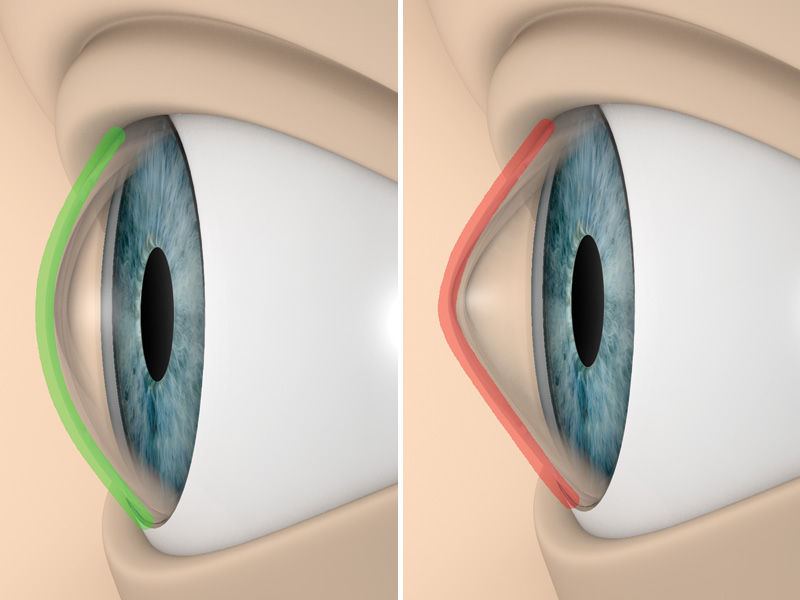Keratoconus
What is it?
Keratoconus is one of the most common degenerative diseases of the cornea. It is the slowly progressive thinning and deformation of the corneal tissue.
It is usually detected in young people starting from puberty, and tends to progress for decades, usually stabilizing after 30 years of age. It may be associated to a large number of local or systemic conditions. It is believed to have a genetic basis, although the importance of environmental factors, such as eye rubbing, should be noted: most patients with keratoconus eyes are chronically and persistenttly rubbing their eyes.
Symptoms
Myopia and keratoconus typically cause irregular astigmatism, visual distortion with blurring, in young patients who regularly rub their eyes. It can make us suspect and must be addressed by a cornea ophthalmologist specialist.
Treatment
Glasses cannot properly correct it, and semirigid contact lenses must be used. They compensate the irregularity, and although tolerance often become problematic over time, it can be recovered by modifying the curvature of the lens or even combining a soft base on which to mount the rigid lens (piggyback).
Keratoconus has been until recently the leading cause of corneal transplant in our environment, but new techniques are in many cases avoiding keratoplasty:
-Crosslinking (CXL) or collagen raticulation. It is a very simple, safe and effective procedure to stop the progression of keratoconus.
-The implantation of “rings” or intracorneal ring segments (IRS). These are rigid clear plastic pieces (PMMA), arched, which are introduced into the corneal thickness. IRS reduce irregularity and topographic de-centering caused by the cone, while flattening the central cornea.
Prevention
Annual periodic review and environmental measures, as not rubbing eyes continuously, are recommended. When having slightest doubt, consult a specialist in this disease ophthalmologist.

